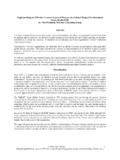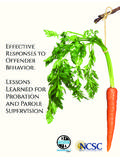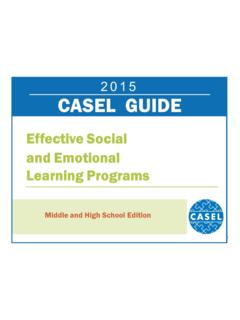Transcription of Techniques for Effective Knowledge Management
1 ATP (FM ) Techniques for Effective Knowledge Management DISTRIBUTION RESTRICTION. Approved for public release; distribution is unlimited. Headquarters Department of the Army MARCH 2015 This publication is available at Army Knowledge Online ( ). To receive publishing updates, please subscribe at *ATP (FM )ATP No. 6- Headquarters Department of the Army Washington, DC, 6 March 2015 Techniques for Effective Knowledge Management Contents Page v INTRODUCTION .. vi Chapter 1 Knowledge Management SUPPORT TO THE ARMY .. 1-1 Knowledge Management .. 1-1 Enable the Mission Command Warfighting Function .. 1-5 Organizing the Mission Command System .. 1-8 Enabling the Operations Process .. 1-9 Creating a Knowledge -Sharing Environment.
2 1- 11 Chapter 2 ASSESSING Knowledge Management .. 2-1 Assessment .. 2-1 Knowledge Management Assessment Overview .. 2-1 Performing the Knowledge Management Assessment .. 2-3 Assessment Outcome and Recommendations .. 2- 13 Focus Areas for Assessment .. 2- 14 Scenario Illustrating Assessment .. 2- 14 Chapter 3 DESIGNING Knowledge Management SOLUTIONS .. 3-1 Design Overview .. 3-1 Solution Design For Common Problem Areas .. 3-4 Scenario Illustrating Design Solutions .. 3- 13 Chapter 4 DEVELOPING Knowledge Management SOLUTIONS .. 4-1 Overview .. 4-1 Developing Solutions .. 4-1 Scenario Illustrating Solution 4-2 Chapter 5 PILOTING Knowledge Management SOLUTIONS .. 5-1 Piloting Overview .. 5-1 Knowledge Management Piloting Techniques .
3 5-1 Distribution Restriction: Approved for public release; distribution is unlimited. *This publication supersedes FM , dated 16 July March 2015iContents Chapter 6 IMPLEMENTING Knowledge Management SOLUTIONS .. 6-1 Implementation OvervIew .. 6-1 Implementation Steps .. 6-1 Implementation Plan .. 6-2 Documenting Solutions During Implementation .. 6-3 Implementation to Assessment .. 6-4 Appendix A Knowledge Management ANNEX FORMAT FOR AN OPERATIONS ORDER .. A-1 Appendix B Knowledge Management STANDARD OPERATING PROCEDURES .. B-1 Standard Operating Procedures Development .. B-1 Appendix C Knowledge Management TOOLS .. C-1 Knowledge Management Tools Selection .. C-1 Non-Digital Knowledge Management Tools .. C-1 Digital Knowledge Management Tools.
4 C-2 Mission Command Information Systems and Collaboration Tools .. C-3 Appendix D CONTENT Management .. D-1 Content Management Tasks .. D-1 Content Management Common Phrases .. D-3 Content Management Principles .. D-3 Content Management Techniques .. D-5 Appendix E INTERVIEWING Techniques FOR Knowledge Management ASSESSMENTS .. E-1 Purpose .. E-1 Role of the Interviewer .. E-1 Prepare for the Interview .. E-2 The Interview .. E-2 Appendix F FACILITATING A PROFESSIONAL FORUM .. F-1 Army Professional Forums .. F-1 Appendix G FOCUS AREAS FOR Knowledge Management ASSESSMENT .. G-1 Standards Analysis .. G-1 Time Management .. G-1 Meeting Analysis .. G-2 Report Analysis .. G-5 Technical Systems Analysis .. G-5 Content Management Analysis.
5 G-6 Appendix H Knowledge Management STRATEGY FORMAT (EXAMPLE) .. H-1 GLOSSARY .. Glossary-1 REFERENCES .. References-1 INDEX .. Index-1 Figures Figure 1-1. Knowledge Management an iterative cycle .. 1-1 ii ATP 6 March 2015 Contents Figure 1-2. Flattening organizational staff processes .. 1- 12 Figure 2- 1. Example of Knowledge Management priorities chart .. 2-9 Figure 2-2. Example of a concept map .. 2- 12 Figure 2-3. A way to convey key Knowledge Management mapping information .. 2- 13 Figure 4-1. Information system interface .. 4- 13 Figure 4-2. Flattening the network .. 4- 14 Figure 4-3. Company Intelligence Support Team (CoIST) collaboration .. 4- 14 Figure 6-1. Knowledge Management process cycle .. 6-4 Figure C-1.
6 Examples of Army professional forums .. C-2 Figure G-1. Example battle rhythm analysis .. G-2 Tables Table 1-1. The Knowledge Management process .. 1-2 Table 1-2. Inputs and outputs .. 1-2 Table 1-3. How Knowledge Management enhances decisionmaking .. 1-6 Table 2-1. Steps of assess key inputs and outputs .. 2-3 Table 2-2. A simple tool for collecting people, processes, tools, and organization 2-5 Table 2-3. Gap analysis chart .. 2-8 Table 2-4. Completed gap analysis chart for the initial assessment .. 2- 17 Table 2-5. Completed gap analysis chart for the follow up assessment .. 2- 19 Table 3-1. Steps of design - key inputs and outputs .. 3-3 Table 3-2. Example meeting agenda quad chart .. 3-6 Table 3-3. Example significant activities initial report.
7 3-7 Table 3-4. Example of file naming convention (update graphic dates) .. 3- 10 Table 4-1. Steps of develop key inputs and outputs .. 4-2 Table 4-2. Balancing the digital and analog components in the brigade combat 4-6 Table 4-3. Current division reports and proposed changes .. 4- 15 Table 5-1. Pilot steps and key inputs and 5-2 Table 5-2. Assessment measures and variables .. 5-3 Table 6-1. Implement .. 6-2 Table 6-2. Gaps to solutions tracker .. 6-3 Table D-1. Content Management table .. D-2 Table D-2. Content Management Techniques for individuals .. D-5 Table D-3. Content Management Techniques for teams .. D-6 Table D-4. Content Management Techniques for organizations .. D-6 Table E-1. Example interview questions.
8 E-2 Table E-2. Things to avoid when interviewing ..E-2 Table E-3. Tips for a successful interview ..E-3 Table F-1. Daily tasks .. F-3 Table F-2. Weekly tasks .. F-4 6 March 2015 ATP iii Contents Table F-3. Monthly tasks .. F-4 Table F-4. Quarterly F-4 Table F-5. Performance metrics .. F-5 Table G-1. Example working group agenda .. G-4 iv ATP 6 March 2015 Preface Publication ATP provides doctrinal Knowledge Management guidance. It provides doctrine for the organization and operations of the Knowledge Management section, and establishes the doctrinal principles, Techniques , and procedures necessary to effectively integrate Knowledge Management into the operations of brigades and higher.
9 ATP applies to Knowledge Management activities in Army headquarters from brigade through Army Service component command ( Brigade includes brigade combat teams (BCT), support brigades, functional brigades, and multifunctional brigades). Commanders, staffs, and subordinates ensure their decisions and actions comply with applicable , international, and, in some cases, host-nation laws and regulations. Commanders at all levels ensure their Soldiers operate in accordance with the law of war and the rules of engagement. (See Field Manual [FM} 27-10). The principal audience for ATP is all members of the profession of arms. Commanders and staffs of Army headquarters serving as joint task force or multinational headquarters should also refer to applicable joint or multinational doctrine concerning the range of military operations and joint or multinational forces.]
10 Trainers and educators throughout the Army will also use this manual. ATP uses joint terms where applicable. Selected joint and Army terms and definitions appear in both the glossary and the text. Terms for which ATP is the proponent publication (the authority) are marked with an asterisk (*) in the glossary. Definitions for which ATP is the proponent publication are boldfaced in the text. For other definitions shown in the text, the term is italicized and the number of the proponent publication follows the definition. ATP applies to the Active Army, Army National Guard/Army National Guard of the United States, and United States Army Reserve unless otherwise stated. The proponent of ATP is Headquarters, Army Training and Doctrine Command.



















